I combined MACD + Ichimoku 100 TIMES and this happened… MACD Ichimoku Cloud Trading Strategies
I took one hundred Trades to see what will happen if you combine Ichimoku Cloud, with the MACD Trading Strategy? Ichimoku Cloud on its own got an approximate win rate of 53 percent, and MACD Trading Strategy got an approximate win rate of 62 percent. Now Ichimoku cloud is a messy indicator, but at the same time, that same mess gives a lot of information about the price movement. What I wanted to find out was, will the Ichimoku cloud Trading Strategy give a good win rate like last time if we remove some of the Ichimoku lines and make it look much cleaner. And at the end of this video, we are going to give the incomplete Ichimoku Cloud trading strategy a Trading Rush Score, to compare it with other trading strategies we have tested so far.
Now, remember, the 53 percent win rate the Ichimoku cloud got, is actually excellent because the 53 percent win rate was achieved with a 1.5 to 1 reward risk ratio. And even your dog can tell that any win rate higher than 50 percent with a higher than 1 reward risk ratio, is a really good win rate. This is the Ichimoku indicator, and I have already explained how it works and how to use it to make money in trading. So in this video, we are going to get rid of some of the Ichimoku lines, to see what happens. I mean who knows if the Ichimoku Cloud can give a profitable winrate without the other things or not. So here are all the Ichimoku lines, and this is the cloud. If you have watched the previous Ichimoku Cloud video, you know that this cloud is really important, because it identifies and stops you from trading in the range markets. So we are going to keep that. We are going to get rid of the lagging span. We are also going to get rid of lead 1 and lead 2 to make it look cleaner. And we are also going to get rid of the conversion line. So we are only going to use the cloud and the base line.
Now if you look at the Ichimoku Cloud indicator, you will notice that it looks much simpler than before. Furthermore, if you look closely, you will notice that this Ichimoku Cloud is kind of indicating strong trends. Here, when there was an uptrend going on, the price was staying above the base line. And here, when there was a downtrend going on, the price was staying below the base line. Also, in the last Ichimoku Cloud video we found out that, if the cloud is green, there is an uptrend going on. And if the cloud is red, there is a downtrend going on. Furthermore, if the price is on the cloud, it can mean that price is in a range, or a slow trend, or changing the trend direction. So what we want is this: If we want to buy in a strong trend, we want the cloud to be green, and we want the base line above the cloud, and the price to be above the base line. If we want to sell in a strong downtrend, we want the cloud to be red and we want the base line below the cloud, and the price to be below the base line.
But hold on a minute, the Ichimoku Cloud looks good and all, but there is no entry signal generator. In other words, nothing is giving an entry signal. Last time, we bought and sold when the base line and conversion line gave a crossover. But in this video, we removed the conversion line, and now all we have is the base line. So now, we have the Ichimoku Cloud showing the strong trends, but nothing that generates an entry signal in the strong trend. So I looked through other indicators that we have tested so far on the Trading Rush channel, to see if we can use something that generates an entry signal in a strong trend. First I combined Ichimoku with the MACD trading strategy that got around 60 percent approximate win rate. But since the MACD strategy gives entry signals when the pullback is big, and since this Ichimoku Cloud shows strong trends, MACD strategy won’t exactly work. We need something that gives good entry signals when the price is moving in a strong trend without giving any deeper pullbacks. In the MACD Trading Strategy video, we bought when the MACD crossover was below the zero line. With the zero line rule, we were only finding the deeper pullbacks in an uptrend, which was a good thing, and made the strategy profitable. We could use the MACD crossover without the zero line rule, but we have something even better. If you remember, in the AI trades video, we created our very own Indicator and gave it a completely professional name “Beep Boop”. That indicator was based on the MACD indicator, but it filtered some of the false MACD crossovers and gave MACD signals in the strong trends. The Beep Boop indicator strategy was also a profitable trading strategy, and if you want to see how it was made, or want to see how to get it for free, check out the AI trades or the Beep Boop Video on the Trading Rush Channel.
Now that we have an indicator that will generate good entry signals in the direction of the trend, here’s how the modified MACD and Ichimoku Cloud Trading Strategy is going to work. If the cloud is green, the base line is above the cloud, and if the price is above the base line, we buy when the Beep Boop Indicator gives a buy entry signal. For those who have not watched the previous Beep Boop video, the buy entry signal according to the Beep Boop Indicator is when the first green bar appears. If the cloud is red, and if the base line is below the cloud, and if the price is below the base line, we sell when the Beep Boop Indicator gives a sell entry signal. Sell Entry according to the Beep Boop is when the first red bar appears. As for the stop loss, since the price stays above the base line of the Ichimoku Cloud, we can set the stop loss below the base line in an uptrend. And set the stop loss above the base line in a downtrend. If Ichimoku Cloud is showing a range, or in other words, if price or base line is on the cloud, entry signals are not valid. Furthermore, while the initial testing, I found out that when the price is in a slow trend or a range, the base line crosses the entry candle. So we will only take entry signals, where the body of the candle is above or below the base line.
Look at this example, here Ichimoku Cloud is showing an uptrend. So we enter when the Beep Boop Indicator gives a buy signal and set the stop loss below the base line of the Ichimoku Cloud. Here, the Ichimoku indicator is indicating a downtrend, so we will sell when the Beep Boop Indicator, or in other words, when the modified MACD gives a short entry signal.
So I tested the MACD and Ichimoku Cloud Trading Strategy 100 times, and here’s what happened.
Number 1. The best part about the Ichimoku Cloud is the base line and the cloud itself. When the price was in a good trend, more trades were won than lost. As you can see, the profit graph went up. But when the price went in the sideways direction, in other words, when price gave false entry signals in the range market, many false signals were filtered by the Ichimoku Cloud. When the price was in a slow trend, some trades were lost because the stop loss that was set according to the base line, was too small. But that’s not exactly a bad thing. In this strategy, we have modified the Ichimoku Cloud and the MACD indicator to show the strong trends. If the price slows down or doesn’t go in our entry direction, we want to get out as quickly as possible.
As you can see in the Trading Rush App, the profit graph went up when the price was in a strong trend, went sideways when the trend was slow, went up when the trend was strong, and so on. Even after taking trades in a slow trend, the profit with the Ichimoku Cloud never went below zero like some of the other trading strategies we have tested so far. Entry signals were taken in the trend direction, Ichimoku Cloud filtered most of the range market, and the profit graph kept going up and up. The starting balance in the Trading Rush App was 10000, and at one point, the account balance reached 12200.
And after 100 trades with the MACD and Ichimoku Cloud Trading Strategy, I got an approximate win rate of 47 percent. And since we used a 1.5 to 1 reward risk ratio, 47 percent is a profitable win rate. The maximum number of trades lost in a row was 10, and the max number of trades won in a row was 7. The profit graph of the MACD and Ichimoku strategy also looks a lot better than some other strategies we have tested so far.
So now, let’s give the MACD and Ichimoku Cloud trading strategy a Trading Rush Score, to see where it ranks up against other strategies.
Interestingly, Beep Boop and Ichimoku together got a win rate close to the win rate Beep Boop Trading Strategy got on its own. This strategy got a 47 percent approximate win rate, and Beep Boop had a 48 percent approximate win rate. So in the Win Rate Category, it gets a 5.8 out of 10 just like the Beep Boop Indicator.
In the easy-to-use category, it gets a 5.5 out of 10. And in the Reliability category, it gets a 6.3 out of 10. It does not give a lot of false signals and even tries to filter the range markets.
In the consistent profits category, it gets a 5.3 out of 10. And because it gives entry signals in the direction of the strong trend, and avoids you from taking trades when the market is in a range, it gets a 7.5 in the Quality of the Trades Category.
So the MACD and Ichimoku Cloud Trading Strategy got a TR Score of 30.4 out of 50. And it ranks 12th from the top, just above the Fractal Breakout, and below the Chaikin Oscillator Trading Strategy.
And That’s all!

